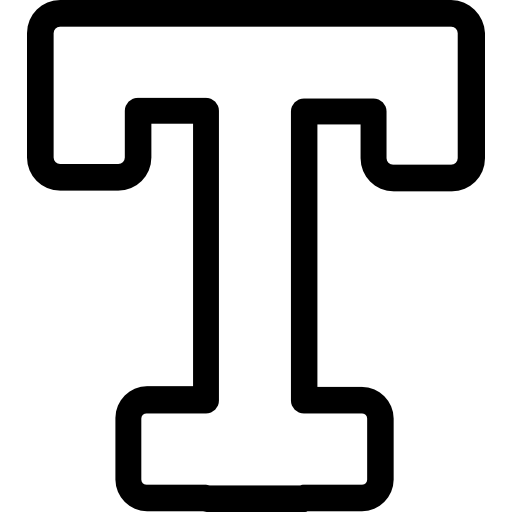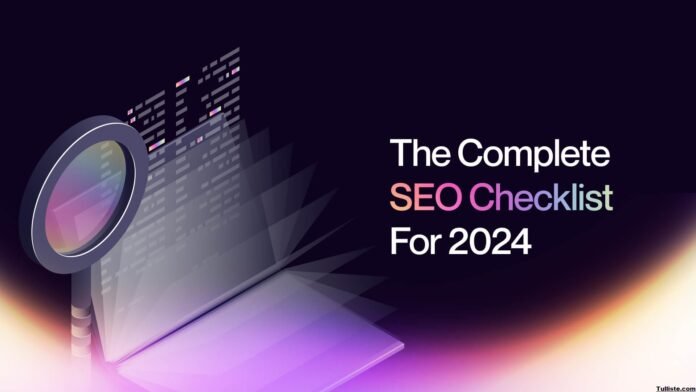Introduction to On-Page SEO
Welcome to the ultimate guide on mastering On-Page SEO! If you’re looking to boost your website’s visibility and climb the search engine rankings, you’ve come to the right place. In this article, we’ll dive into everything you need to know about optimizing your website for search engines. From keyword research to user experience, we’ve got you covered. So, grab a cup of coffee and let’s get started on perfecting your On-Page SEO game!
Why On-Page SEO is important for website ranking
When it comes to boosting your website’s visibility and climbing the search engine rankings, On-Page SEO plays a crucial role. By optimizing various elements on your website, you can improve its relevance to search engines like Google, making it easier for them to understand what your site is about.
Effective On-Page SEO starts with keyword research and optimization. By strategically incorporating relevant keywords into your content and meta tags, you can attract more organic traffic from users actively searching for information related to your industry.
Content creation and optimization are also key components of On-Page SEO. High-quality, engaging content not only keeps visitors on your site longer but also signals authority and expertise to search engines.
Furthermore, factors such as meta tags, internal linking structure, image optimization, mobile-friendliness, page loading speed, URL structure, user experience metrics all contribute to enhancing the overall performance of your website in search results.
Keyword Research and Optimization
When it comes to on-page SEO, keyword research and optimization play a crucial role in driving organic traffic to your website. It all starts with understanding the specific terms and phrases your target audience is searching for online. By conducting thorough keyword research, you can identify high-traffic keywords that are relevant to your content.
Optimizing your content with these targeted keywords helps search engines understand the context of your pages better, ultimately improving their visibility in search results. Incorporate keywords naturally throughout your content while avoiding overstuffing which can harm your rankings.
Additionally, consider long-tail keywords that are more specific and have less competition. These can help attract users who are closer to making a purchase decision or seeking detailed information on a particular topic. Constantly monitoring keyword performance and adjusting strategies based on insights is key to staying ahead in the ever-evolving world of SEO optimization.
Content Creation and Optimization
Crafting high-quality content is the cornerstone of successful on-page SEO. When creating content for your website, it’s crucial to focus on relevance and value for your audience. Start by conducting thorough keyword research to understand what your target audience is searching for online.
Optimize your content by strategically incorporating these keywords throughout your copy while maintaining a natural flow. Avoid keyword stuffing, as this can negatively impact user experience and search engine rankings. Additionally, make sure your content is well-structured with headers, bullet points, and concise paragraphs to improve readability.
Engage readers with compelling headlines and meta descriptions that accurately reflect the content of the page. This not only entices users to click but also helps search engines understand the context of your content. Don’t forget to include internal links within your text to guide users to other relevant pages on your site.
By consistently creating valuable and optimized content, you’ll not only enhance your website’s visibility in search engine results but also establish credibility and authority in your industry.
Meta Tags and Descriptions
Meta tags and descriptions play a crucial role in on-page SEO by providing search engines with information about the content of your website. These snippets appear in search results, giving users a preview of what to expect when they click through.
When optimizing meta tags, ensure they accurately reflect the page’s content and include relevant keywords to improve visibility. Titles should be concise yet descriptive, while meta descriptions should entice users to click by offering a compelling summary.
Utilizing unique meta tags for each page on your site can enhance its overall SEO performance. Additionally, incorporating schema markup can provide search engines with even more detailed information about your content, further boosting visibility.
By paying attention to these small details and optimizing your meta tags and descriptions effectively, you can improve your website’s chances of ranking higher in search engine results pages.
Internal Linking and Navigation
Internal linking and navigation play a crucial role in optimizing your website for search engines. By strategically linking to other pages within your site, you can help search engine crawlers discover and index more of your content. This not only improves the overall structure of your website but also enhances user experience by guiding visitors to relevant information.
When implementing internal links, make sure they are natural and contextually relevant to the content. Avoid overstuffing keywords in anchor text as this can be seen as spammy by search engines. Additionally, consider creating a sitemap to help both users and search engines navigate through your website easily.
Proper navigation design is essential for improving user engagement and reducing bounce rates. Ensure that your menus are clear and intuitive, allowing visitors to find what they’re looking for quickly. A well-organized website with logical navigation paths can significantly impact how users interact with your site.
Image Optimization
When it comes to on-page SEO, image optimization plays a crucial role in enhancing user experience and boosting search engine rankings. Optimizing images involves more than just adding alt text; it’s about ensuring that your images are high-quality, relevant, and properly sized for fast loading times.
Start by choosing the right file format for your images – JPEG is ideal for photographs while PNG works well for graphics with transparency. Compressing your images without compromising quality is also key to improving page speed.
Don’t forget to use descriptive filenames that include relevant keywords. This helps search engines understand what the image is about and can improve its visibility in image searches.
Alt text is essential not only for SEO but also for accessibility as it describes the content of the image to visually impaired users who rely on screen readers. Additionally, lazy loading techniques can further optimize your site’s performance by only loading images when they come into view on the user’s screen.
By paying attention to these details and optimizing your website’s images effectively, you can enhance both user experience and SEO performance simultaneously.
Mobile-Friendliness
Is your website optimized for mobile devices? In today’s digital age, having a mobile-friendly site is crucial for success. With more and more users browsing the internet on their smartphones and tablets, you can’t afford to neglect the mobile experience.
A mobile-friendly site ensures that visitors have a seamless and enjoyable experience regardless of the device they’re using. It means easy navigation, readable text without zooming, and properly sized images that load quickly.
Google also prioritizes mobile-friendly websites in search results. By optimizing your site for mobile devices, you improve your chances of ranking higher in search engine results pages (SERPs). This can lead to increased organic traffic and better visibility online.
Consider implementing responsive design or creating a separate mobile version of your website to cater to mobile users effectively. Test your site regularly on different devices to ensure it functions well across various screen sizes. Mobile-friendliness is not just an option anymore; it’s a necessity for online success.
Page Loading Speed
Page loading speed plays a crucial role in on-page SEO. Slow-loading pages can frustrate visitors and lead to higher bounce rates, impacting your website’s performance in search engine rankings.
To improve page loading speed, optimize images by compressing them without compromising quality. Minify CSS and JavaScript files to reduce the size of your webpage. Utilize browser caching to store frequently accessed resources locally, speeding up load times for returning visitors.
Consider using a content delivery network (CDN) to distribute your website’s assets across multiple servers globally, reducing latency for users accessing your site from different locations. Test your page speed regularly using tools like Google PageSpeed Insights or GTmetrix to identify areas for improvement.
Remember, a fast-loading website not only enhances user experience but also signals to search engines that your site is reliable and high-quality.
URL Structure and Permalinks
When it comes to On-Page SEO, paying attention to your URL structure and permalinks is crucial for optimizing your website.
Make sure that your URLs are concise, descriptive, and contain relevant keywords. Avoid using numbers or random strings of characters in your URLs as they can confuse both search engines and users.
A clean URL structure not only helps improve your site’s ranking but also makes it easier for visitors to navigate through your content. When creating permalinks, include the main keyword of the page and keep them simple yet informative.
Remember that search engines use URLs to understand the content of a page better, so optimizing them can positively impact your SEO efforts. Additionally, having user-friendly permalinks enhances the overall user experience on your website.
By taking the time to optimize your URL structure and permalinks, you are setting a strong foundation for better visibility in search engine results pages.
User Experience and Engagement Metrics
User experience and engagement metrics play a crucial role in on-page SEO. When users visit your website, you want them to have a seamless and enjoyable experience. This includes easy navigation, relevant content, and fast loading times.
Engagement metrics such as bounce rate, time on page, and pages per session provide valuable insights into how visitors interact with your site. By analyzing these metrics, you can identify areas for improvement and create a more engaging user experience.
To enhance user engagement, focus on creating high-quality content that is both informative and visually appealing. Utilize multimedia elements like videos and images to keep users engaged and encourage them to explore further.
Additionally, optimizing your website for mobile devices is essential for providing a positive user experience. Make sure your site is responsive and loads quickly on all devices to reduce bounce rates and improve engagement metrics.
By prioritizing user experience and monitoring engagement metrics regularly, you can optimize your website for better search engine rankings while also delivering value to your visitors.
Conclusions
Mastering on-page SEO is essential for ensuring your website ranks well in search engine results. By following the ultimate checklist provided in this article, you can optimize your website to improve visibility, attract more organic traffic, and ultimately drive better business outcomes. Remember that SEO is an ongoing process, so continue to monitor and adjust your strategies as needed to stay ahead of the competition. Here’s to achieving great success with your on-page SEO efforts!


